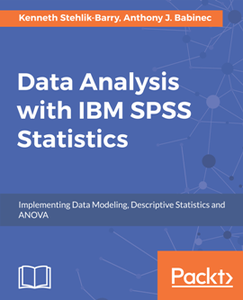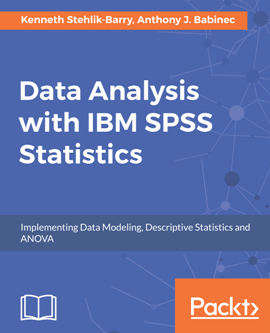Data Analysis with IBM SPSS Statistics
by Kenneth Stehlik-Barry and Anthony J. Babinec
English | 2017 | ISBN: 178728381X | 435 Pages | PDF/ePUB | 39/10 MB
by Kenneth Stehlik-Barry and Anthony J. Babinec
English | 2017 | ISBN: 178728381X | 435 Pages | PDF/ePUB | 39/10 MB
This book is designed for analysts and researchers who need to work with data to discover meaningful patterns but do not have the time (or inclination) to become programmers. We assume a foundational understanding of statistics such as one would learn in a basic course or two on statistical techniques and methods.
What You Will Learn:
Install and set up SPSS to create a working environment for analytics
Techniques for exploring data visually and statistically, assessing data quality and addressing issues related to missing data
How to import different kinds of data and work with it
Organize data for analytical purposes (create new data elements, sampling, weighting, subsetting, and restructure your data)
Discover basic relationships among data elements (bivariate data patterns, differences in means, correlations)
Explore multivariate relationships
Leverage the offerings to draw accurate insights from your research, and benefit your decision-making
SPSS Statistics is a software package used for logical batched and non-batched statistical analysis. Analytical tools such as SPSS can readily provide even a novice user with an overwhelming amount of information and a broad range of options for analyzing patterns in the data.
The journey starts with installing and configuring SPSS Statistics for first use and exploring the data to understand its potential (as well as its limitations). Use the right statistical analysis technique such as regression, classification and more, and analyze your data in the best possible manner. Work with graphs and charts to visualize your findings. With this information in hand, the discovery of patterns within the data can be undertaken. Finally, the high level objective of developing predictive models that can be applied to other situations will be addressed.
By the end of this book, you will have a firm understanding of the various statistical analysis techniques offered by SPSS Statistics, and be able to master its use for data analysis with ease.



